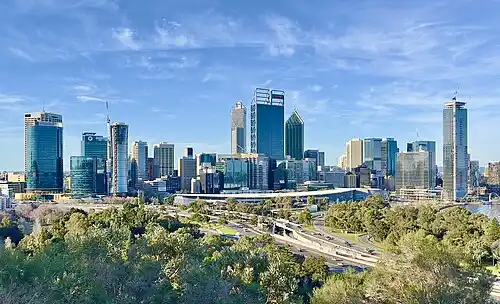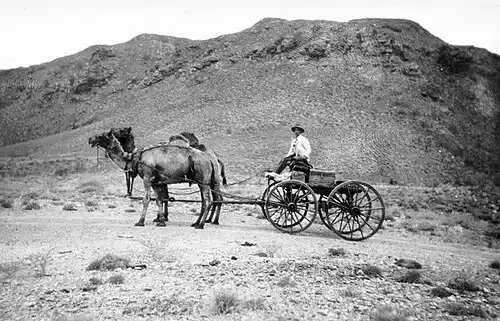
The Swan River Colony was a colony established by Captain James Stirling and other British settlers in 1829 Western Australia. It was named after its location on the Swan River. Originally, a penal colony was not planned , but rather a colony based on voluntary settlement was intended. However, the colony was limited, and in 1850 became a penal colony too. Before being discontinued in 1868, nearly 10,000 convicts were settled here. Later on, Swan River Colony eventually developed into the town of Perth. It was still a small colony at that juncture, but the discovery of gold at Kalgoorlie and Coolgardie in Western Australian saw a major boom in the 1880s and 1890s. Today Perth is the fourth largest city in Australia and the center of settlement in the west of the continent.[1]
Research your ancestors on MyHeritage
The Swan river colony chronology of eventsThe Swan river colony chronology of events
Initial proposal as a colonyInitial proposal as a colony
Dutch explorers had charted a large proportion of the coastline of Western Australia in the second half of the seventeenth century. It was not favored though by the British government as a site for settlement when it began colonizing Australia from the late 1780s onwards. The proposal to establish a colony in Western Australia instead came from Captain James Stirling, a British naval officer who had reconnoitered the western coast of the continent in the late 1820s. He proposed founding a free settlement at the mouth of the Swan River, promoting the idea by presenting an exaggeratedly favorable account of the conditions there and also alarming the British government with talk of a proposed French colony on the west of the continent to rival British domination of Australia.[2]
Arrival of the first shipsArrival of the first ships
Stirling’s ideas met with approval and in 1829 the first ships arrived to the Swan River and began establishing the colony there at the site of what would eventually become the town and then city of Perth. Officially the name ‘Swan River Colony’ was abandoned in 1832, though it remained unofficially in use for decades to come. The first years of colonization were not easy. The land here was not good, there were few resources for the settlers to avail of and they were distant from other British colonies on the eastern side of the continent. Moreover, they quickly came into conflict with the local Aboriginals. Despite these impediments, the colonists under Stirling and his successors as governor of Western Australia persisted and by the end of the 1840s the colonial population had grown slowly to nearly 6,000 people.[3]
In 1850, in an effort to expand the ailing colony, Swan River became a penal colony. Over the next eighteen years just under 10,000 convicts arrived on 43 different ships. This method of utilizing penal colonies to establish and expand civilian colonies in Australia was tried and tested and it proved as effective here as it had in New South Wales and on Tasmania. By 1880 the colonial population of Western Australia had expanded to over 29,000 and the town of Perth had swelled to 8,500. This ballooned in the two decades that followed after a gold rush began following the discovery of gold at Kalgoorlie and Coolgardie. By 1900 Perth was a growing city of 60,000 people and the wider colonial population of Western Australia was recorded as being 180,000 by 1910. Thus, although it took time, the Swan River Colony eventually formed the basis for wider western settlement in the west of the continent.[4]
Extent of migration to the swan river colonyExtent of migration to the swan river colony

As we have seen, the migration to the Swan River Colony was limited at first. Unlike with New South Wales and Tasmania, those who came in the late 1820s and into the 1830s were voluntary settlers from Britain and Ireland and when they learned that Western Australia was not as hospitable as Stirling had promoted it as being, many pulled out of the endeavor. As such, migration to Swan River was slow in the early years. It increased with the reshaping of Perth into a penal colony in 1850 and then it mushroomed in the 1890s and 1900s as the gold rush was underway in Western Australia. Not all of the settlement associated with the gold rush came from Britain and Ireland.
Other migration to the swan river colonyOther migration to the swan river colony
Some involved migration from the other Australian colonies. Further people came from other areas of British colonial activity. For instance, a visitor to Kalgoorlie and Coolgardie at the end of the nineteenth century would have seen camels from Afghanistan and their Muslim owners who had come to Western Australia in search of their fortune. In all over 100,000 people flocked to Western Australia during these years. But it didn’t last for long. Today Kalgoorlie and Coolgardie are largely ghost towns.[5]
Demographic impact of the swan river colonyDemographic impact of the swan river colony
The establishment of the Swan River Colony has had a significant impact on the settlement geography and demography of Australia. Most of the population of Australia is located in the south-east of the continent in the more temperate regions along the coast of Victoria and New South Wales. Sydney, Melbourne and Canberra are all located here. By way of contrast, large stretches of South Australia, Western Australia and the Northern Territory are very thinly inhabited. A major exception is Perth which is entirely anomalous in the western half of the continent as a large urban metropolis and center of habitation. It is Australia’s fourth largest city today with a population of 2.1 million people as of 2023.[6] Owing to this unusual historical development it has been referred to as one of the most isolated major cities anywhere in the world. The very fact that it exists here in a remote part of the continent is owing to the actions of Stirling and others in founding the Swan River Colony in 1829, although clearly future settlement was aided by the gold rush of the late nineteenth century.[7]
See alsoSee also
Explore more about Australian Penal ColoniesExplore more about Australian Penal Colonies
- Australia, Western Australia Births record collection at MyHeritage
- Australia, Western Australia Marriages record collection at MyHeritage
- Australia, Western Australia Deaths record collection at MyHeritage
- Western Australia Family History record collection at MyHeritage.
- Settlers, Squatters and Selectors: Land ownership in Australia, 1788-1900 at Legacy Family Tree Webinars.
- History of the County of Perth from 1825 to 1902 record collection at MyHeritage.
- A Cargo of Criminals: Transportation to Australia at Legacy Family Tree Webinars.
- Researching in Australian Archives at Legacy Family Tree Webinars.
- Australia Day: January 26 at the MyHeritage blog.
- State Library of Western Australia
- Convict Records of Western Australia
References
- ↑ https://www.nma.gov.au/defining-moments/resources/founding-of-perth
- ↑ J. M. R. Cameron, ‘Western Australia, 1616–1829: An Antipodean Paradise’, in The Geographical Journal, Vol. 140, No. 3 (Oct., 1974), pp. 373–385.
- ↑ https://www.nma.gov.au/defining-moments/resources/founding-of-perth
- ↑ https://slwa.wa.gov.au/pdf/geneorecordsapr2001.pdf
- ↑ https://museum.wa.gov.au/explore/wa-goldfields/rush-gold/on-track
- ↑ https://worldpopulationreview.com/world-cities/perth-population
- ↑ Andrew MacLachlan, et al., ‘Urban Growth Dynamics in Perth, Western Australia: Using Applied Remote Sensing for Sustainable Future Planning’, in Land, Vol. 6, No. 1 (2017).


